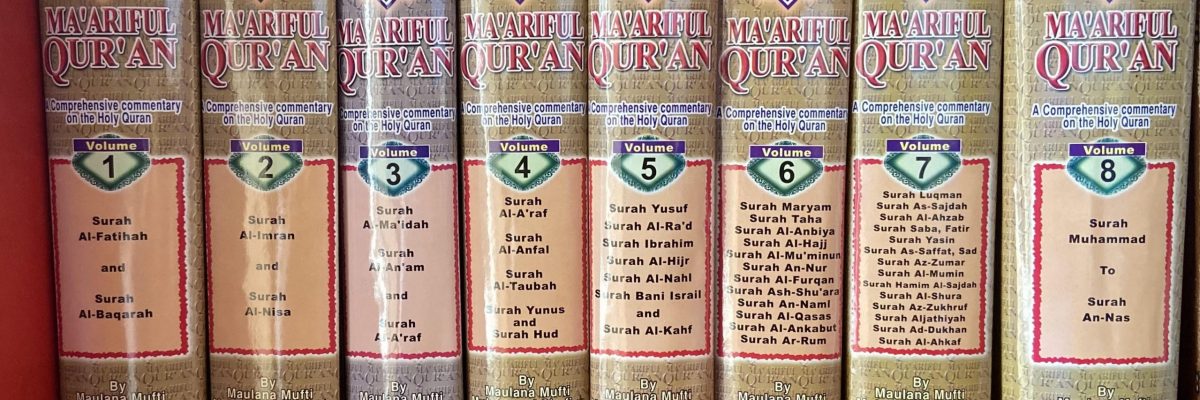Salaams, I want to pose a question on the times of Fajr and Isha in the Uk. Certain individuals follow what is 15 degrees solar depression in Isha, and 18 degrees in Subhus Sadiq. On the contrary, there is another Salaah time for Isha and Fajr, based on “viewing”, which in technical terms they call “Mushaahadah”. In Batley, Leicester and a few other places they are following the solar depressions beginning times. Elsewhere it is the opposite. As this affects our Salaah, which is a major element of Islam, and it also affects our fasts, again which is a major pillar of Islam, i would like clear directions as to what is correct.
In the name of Allah, the most Beneficent, the most Merciful.
Answer
Most prayer times in Britain are derived from the HM Nautical Almanac office and in terms of the times of Zuhr, Asr, sunset and sunrise, these times are accepted by the Ulamas of Britain, as it is fairly easy to observe and verify the times for the aforementioned salah.
However to determine times for Fajr and Esha in Britain is not that straight forward or easy.
Before, mentioning why, I would like to mention Islamically, when does the Fajr and Esha salah start.
The beginning of the Fajr prayer amongst the Ulama is at the time at which the whiteness in the sky appears, horizontally on the length and breadth of the horizon known Islamically as Subhe-Sadiq. (Hidaayah P.80 V.1)
Hazrat Maulana Ashraf Ali Thanwi (RA) describes the beginning of the Fajr prayer. He says: “In the last part of the night at the approach of dawn some whiteness can be noticed on the length of the horizon towards the East i.e. from the direction in which the sun rises. After a little while, whiteness can be noticed on the breadth of the horizon. This whiteness begins to spread very rapidly. After a little while it becomes completely bright. From the time that this broadness becomes visible the time of fajr commences. (Bashti Zewar P.129)
The Prophet of Allah Sallallahu Alahi Wasalam has said: “Offer salah of Fajr in isfaar (i.e. when the light of the morning has spread) for there is greater reward in it.” (Sunan Tirmizi P.40 V.1)
In another hadith The Prophet of Allah Sallallahu Alahi Wasalam has said: “ Fajr is not like what appears in the sky like this (and the Messenger of Allah Sallallahu Alahi Wasalam raised his hand upwards) until like this (and the Messenger of Allah Sallallahu Alahi Wasalam made his fingers widespread.) (Sahih Bukhari p.80 v.1)
Regarding the starting of Esha salat, there is no disagreement amongst the scholars that Esha time starts when the shafaq sets in. However, there are two levels of shafaq. They are known as shafaq-ahmar and shafaq abyadh.
According to Imam Abu Haneefa (RA) the beginning time of Esha is when there is no trace of light left in the sky. This is Shafaq Abyadh. On the other hand, according to the other imams including the most prominent students of Imam sahib, Imam Muhammed & Imam Abu Yusuf (RA) when the suns red after glow disappears then Esha time will start. (Hidayyah P.82 V.1)
Notably there was also a disagreement amongst the sahabaa’s on this issue. Those sahabas who consider that Esha time starts at shafaq , including Saaiduna Ibn Abbas Radiallahu Anhu, Saaiduna Umar Radiallahu Anhu Saaiduna Ali Radiallahu Anhu, Ubaidah ibin Thabit Radiallahu Anhu. Those Sahabas who say that it begins at shafaq abyadh include Saaiduna Abu Bakr Radiallahu Anhu, Muaz bin Jabal Radiallahu Anhu, Abdullah bin Zubair Radiallahu Anhu.
(Fajr & Esha Time in Britain-Maulana Yaqub Miftahi p.10)
Below I have mentioned some Ahadeeth rearding the beginning of Esha salah.
- The Prophet of Allah Sallallahu Alahi Wasalam used to pray the Zuhr at midday and the Asr at the time when the sun was still bright, the Maghrib salah after sunset. And Esha when he saw people assembled, he would pray earlier and if the people delayed he would delay the salah. And they or the prophet of Allah Sallallahu Alahi Wasalam used to offer the Fajr salah in the dark.” (Sahih Bukhari P.80 V.1)
- Saaiduna Numan bin Basheer Radiallahu Anhu narrates: “ I am the one who is best informed of the time of this prayer. i.e. night prayer. The Prophet of Allah Sallallahu Alahi Wasalam used to observe it at the hour when the moon went down on its third night.” (Sunan Nasaai P.42 V.1)
In Britain it is difficult to determine the precise time of Fajr and esha salah. The reason is firstly because countries which is more than 50oc latitude such as Britain, Greenland, Norway, Northern Canada, Alaska during some months in the year there is no sharee night, only white illumination remains throughout the night.
The second reason for the difficulty in determining the times of Fajr and Esha is that Fajr and Esha salah are observed not by the position of the sun but by the level of illumination in the night sky. (Fajr & Esha time in Britain P.4)
Before mentioning what the ulamaas of Britain have said regarding this masala I will first of all would like to mention the definition of twilight and the scientific points regarding this.
Definition of Twilight
Due to the earth having an atmosphere it does not get completely dark straight after sunset nor does it become light immediately when the sun rises. The interval between the sun setting and total darkness and the interval from darkness to sunrise is known as twilight. During these intervals the atmosphere above the earths surface stays illuminated. (Fajr &Esha time in Britain)
This happens because the Earths atmosphere causes scattering of sunlight so that light reaches the observer before sunrise and sunset. In astronomy the twilight period is divided into civil, nautical and astrominical twilight corresponding to the solar depressions of 6, 12 and 18 degrees.
The descriptions of the aforementioned twilight are as follows:
Civil twilight
This is the time when illumination is sufficient under good whether conditions, terrestrial objects can be clearly noticeable. The horizon and the brightest starts are clearly visible.
Nautical twilight
During this time under good atmospheric conditions and in the absence of other illumination general outlines of objects can be distinguished but detailed outlines are not possible.
Astronomical Twilight
When it is truly dark and hardly any twilight remains. The sky illumination is so faint that it is undetectable.
Horizon
This is the term given to the line or circle that forms the boundary between the earth and the sky. (Subhe sadiq Awr Shafaq Kee Tahqeeq P.43 – Maulana Yaqub Qasmi)
After pointing out the definitions of the types of twilights, I would now like to mention what the ulaamaas of Britain say regarding this masala.
Majority of the timetables, which can be found in our masajids today, are based on the mushahadah carried out by Maulana Yakub Miftahl, who is part of the ‘Hizbul-Ulama’ group. This mushahadah was carried out from Sep 1987 to Aug 1988.
The Hizbul Ulama group seeing the difficulty and differences the other ulama’s were coming to decided to solve this problem by carrying out mushahadah i.e. observation by naked eyes to determine the correct times for Fajr and Esha prayers. Their observation was partly based to provide prayer times on what they observed. Their observations showed that the prayer times do no continue to stay on any particular degree but fluctuates between 12 to 16 degrees. (Fajr & Esha times in Britain P.5)
Their Mushahadah was mainly to observe:
- First light of the morning (whether it is Subhe Kazib or Subhe Sadiq)
- The spreading of the first light.
- End of Shafaq ahmer
- End of shafaq abyadh
They prove their point that mushahadah has precedence over degree times. This is because scientific knowledge and theories are limited particularly in determining the time of subhe sadiq & Esha salah.
Maulana Yakub Miftahi, furthermore, states that scientific theories are changing on a daily basis. He uses an example that scientists once thought that the sun did not move; now the current belief is that the whole solar system we live in is moving. (Fajr & Esha times In Britain p.18)
This theory can also be established trough the following Quranic verse:
“And he it is who created the night and the day, the sun and the moon. They swim along each in its rounded course.” (Al Anbiyaah V.33)
Furthermore, Maulana Yakub Miftahi proves his argument by stating that to measure twilight is difficult. In his book Fajr and Esha time in Britain (P.29) he relates a passage written by Rozenburg in his book; “Twilight: A study in Atmospheric Optics.”
“During the course of twilight the illuminance at the earth’s surface varies. This situation greatly impedes the measurement of the twilight” He carries on by stating “Measuring the twilight leads to many difficulties such as the brightness varies, the glow becomes faint etc… plus this process takes place so rapidly which makes it even more difficult to measure it.”
The Prophet of Allah Sallallahu Alahi Wasalam has annulled the use of technology.
“We are an unlettered nation; we neither read; nor do we calculate; a month is like this (29 days) and like this (30 days). (Sahih Bukhari P.256 V.1)
Also the Maulana brings quotes from Shah Waliulah (RA), Hazrat Maulana Ashraf Ali Thanwi (RA), Imam Ghazali (RA) that mushahadah has more reasonable and realistic attributes than degree times. (Fajr And Esha times in Britain P20)
Thus their conclusion is that Muslims in Britain should have faith and follow the times of Fajr and Esha Salah based on their mushahdah.
Maulana Yakub Qasmi chairs the second group. He is in favour of performing Fajr and Esha salah when the sun is 18oc below the horizon i.e. Astronomical Twilight.
Maulana establishes his argument from the texts of the following astronomical books; Beiruni-Kitabul Masuudi P.27, Rubul-Mujeeb P23 and the commentary of Sunan Tirmizi, Maarifus Sunan P.28 V.2.
The texts from the aforementioned books indicate the view that the beginning of fajr and esha is at 18oc. (Astronomical twilight)
The third group of people are those who follow Mufti Rasheed Ahmed Ludyanhwis judgement. Mufti Rasheed Ahmed is in favour of performing Fajr salah at 15oc and perform the esha salah at 12 oc (Nautical Twilight)
His evedience can be found in Ahsanul Fatwa (P.164 V.2)
In Sharah Chugaymini (an astronomy book), clearly states that subhe kazib is at 18oc and the difference between subhe sadiq and kazib and shafaq ahmer and shafaq abyadh is 3oc, thus subh sadiqa will be at 15oc.
The fourth ruling delievered by Maulana Samir Uddin is that during the winter i.e. from August to March, subhe kazib will be at 18oc and Fajr and Esha will be prayed at 17.30oc. From April to May, Esha will change to 15oc and from the 15th May to the end of July Esha should be prayed on the 1/7 Subul-lail verdict.
Maulana Samir Uddins reason for praying Fajr and Esha at 17.30oc is because according to the Greenwich observatory based in London UK the time stated by them when the light appears across the full width of the sky (which we know it as Subhe sadiq) is measured at 17.30oc hence, maulana follows this ruling.
The conclusion of this article is that one can read their salah or fast according to one of the four rulings. Whichever view is adopted by one city or community is correct.
Only Allah Knows Best
Mohammed Tosir Miah
Darul Ifta Birmingham.

